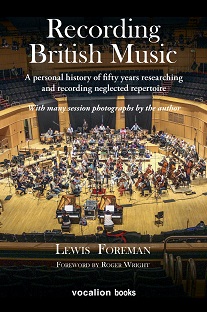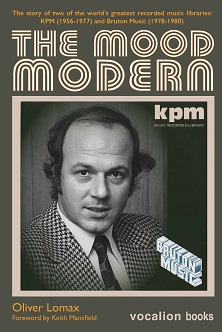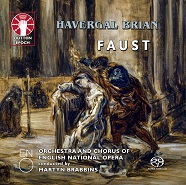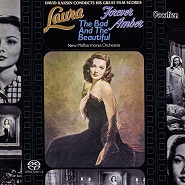Hiroshima
1: LION DANCE (Kuramoto)
2: ROOMFUL OF MIRRORS (Kuramoto)
3: KOKORO (Iwataki)
4: LONG TIME LOVE (Kuramoto; Hata)
5: DA-DA (Kuramoto; Hata)
6: NEVER, EVER (Kuramoto; Hata)
7: HOLIDAYS (Kuramoto; Acuna)
8: TAIKO SONG (Kuramoto)
Personnel:
Dan Kuramoto (saxophones, flute, Japanese flutes, percussion, vocals)
June Okida Kuramoto (koto, soprano koto)
Richard Mathews (keyboards, synthesizer, vocals)
Peter Hata (guitar); Dane Matsumura (bass guitar)
Danny Yamamoto (drums, Japanese percussion)
Johnny Mori (taiko [Japanese drum], percussion)
Teri Kusumoto (vocals, percussion); Jess Acuna (percussion, vocals)
Additional musicians:
Donna Fein, Carolyn Dennis, Merry Greene, Jon Joyce,
Rich Page, Zedrick Turnbough (background vocals) [1, 3]
Augie Johnson, Jim Gilstrap, Alex Brown, Marlena Jeter,
Miki Howard (background vocals) [2, 4, 6-7]
Dean Cortez (bass guitar); Pat Murphy (congas)
Vince Charles (steel drums, timbales)
Odori
9: CRUISIN’ J-TOWN (D & J Kuramoto; Kusumoto; Hata)
10: ODORI (D & J Kuramoto; Kusumoto;
Tsukamoto; Hata; Mori; Acuna)
11: ECHOES (D Kuramoto; Hata)
12: WINDS OF CHANGE HENKA NO NAGARE
(D Kuramoto; Matsumura; Mathews)
13: WARRIORS (D Kuramoto; Hata; Mathews)
14: SHINTO (D Kuramoto)
15: ALL I WANT (D Kuramoto)
16: FORTUNE TELLER (D Kuramoto)
Personnel:
Dan Kuramoto (saxophones, flute, Japanese flutes, percussion, vocals)
June Okida Kuramoto (koto, bass koto, shamisen)
Richard Mathews (keyboards, synthesizer); Peter Hata (guitar)
Dane Matsumura (bass guitar); Danny Yamamoto (drums)
Johnny Mori (taiko [Japanese drum], percussion)
Teri Kusumoto (vocals, percussion)
Jess Acuna (congas, percussion, vocals)
Additional musicians:
Augie Johnson, Jim Gilstrap, Marlena Jeter, Lillian Tyne
(background vocals); Michael Boddicker (synthesizer)
Alex Acuna (congas, timbales); Masao, Manabu (sho)
Formed in in Los Angeles 1974, the Hiroshima group forged its reputation as an eclectic band incorporating elements of R&B, soul, pop and jazz but with the distinctive sound of the koto and the spirit of Japan at its core. Flautist-saxophonist-composer Dan Kuramoto, a third-generation Japanese American born and raised in East Los Angeles, and June Kuramoto, one of the world’s leading koto players, have always been Hiroshima’s driving, creative force. Under their leadership the band secured a deal with the Arista label in 1979, which resulted in two albums – Hiroshima (1979) and Odori (1980) – that have since become classics of the jazz-funk/crossover genre, and are compiled here for your listening pleasure. Wayne Henderson, formerly of jazz-funk group The Crusaders, produced both albums. A man with the Midas touch, he had also masterminded a string of successful albums for artists including Side Effect, Caldera, Bobby Lyle, Pleasure, Gabor Szabo and Ronnie Laws.
Hiroshima (1979) includes such jazz-funk staples as Lion Dance, which combines a disco beat with koto, rock-ish electric guitar and shakuhachi (Japanese bamboo flute), and the sultry Da-Da featuring vocalist Teri Kusumoto. Kusumoto is also featured on the beautiful Roomful of Mirrors, one of the album’s two ballads.
Odori, released in 1980, is among the band’s best efforts. Some of the music even has a panoramic, filmic quality; indeed certain sections of the album are rather like a movie score. At the root of it all, though, are those compelling rhythms, and nowhere is this better illustrated than by the robust funkiness of Cruisin’ J-Town, one of Hiroshima’s most popular pieces. The title track, Odori, means dance, but this is hardly dance-like; in fact it’s more akin to film underscore and seems to depict a twilight journey through mysterious terrain. Winds of Change (Henka No Nagare) gave Hiroshima their first Grammy Award nomination (for Best R&B Performance) and, like Odori, its panoramic quality puts it in the film underscore bracket. Shinto, another Dan Kuramoto composition that sounds like it belongs in a film score, is named after the indigenous faith of the Japanese people – and in the 21st century this beautiful, thought-provoking music remains as evocative as ever.
Remastered directly from the original stereo analogue tapes. Includes an eight-page booklet with a lengthy essay detailing the history of the band as well as a discussion of the music itself.

 Login Status
Login Status 









